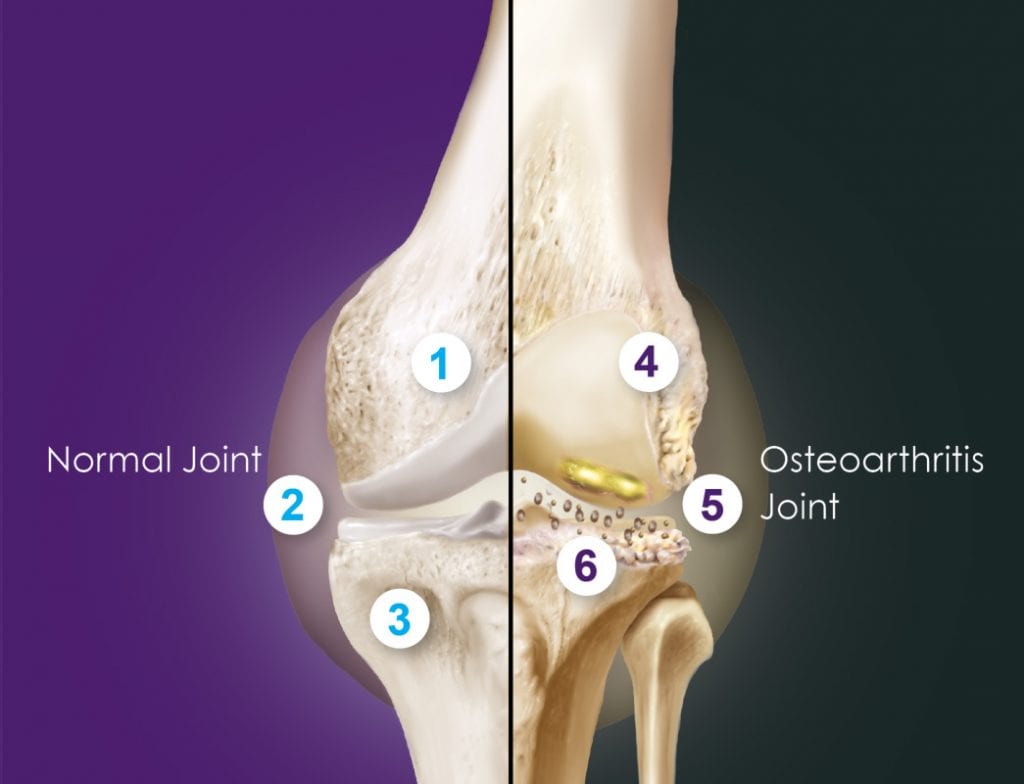This website uses cookies so that we can provide you with the best user experience possible. Cookie information is stored in your browser and performs functions such as recognising you when you return to our website and helping our team to understand which sections of the website you find most interesting and useful.
Osteoarthritis is a chronic (long lasting) disease, the most common form of arthritis that affects nearly one in six Canadians14,15
According to the Arthritis Society, the number of Canadians diagnosed with osteoarthritis will increase to one in four by 2035.15
Osteoarthritis is a degenerative or “wear and tear” condition that affects all of the joint tissues (cartilage, bone, muscles and ligaments), and commonly occurs in the knees, hands, and hips.14,16
There is no cure for osteoarthritis, but there are treatment options available to help reduce pain, improve function, and in some cases delay disease progression.14
Stages of Knee Osteoarthritis

Inside an osteoarthritis joint
- Normal cartilage: Provides a smooth surface, allowing bones to move easily across each other.
- Synovial fluid: Lubricates and provides shock absorption during activity because it contains a high concentration of hyaluronic acid.
- Normal bone: Provides strength and support for the body’s tissues and organs.
- Eroded cartilage: If completely worn away, bones may painfully scrape against each other.
- Osteoarthritis synovial fluid: Degeneration from osteoarthritis leads to lower production of hyaluronic acid and poorer quality.
- Osteoarthritis bone: Contains osteophytes, also called bony spur growths.
Learn more about the causes of osteoarthritis, the symptoms, and diagnosis.


